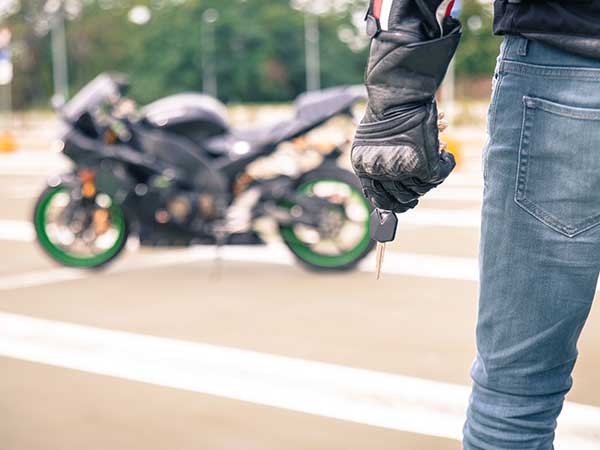Tips On Buying Used Motorbikes
The experience of looking and purchasing a second-hand motorbike from a private seller can be a range of mixed feelings and emotions. It could be one of the most incredible days of your life or one of the saddest. The thoughts and questions may be going through your mind, is the bike stolen? Why is it for sale? Is there any finance outstanding? Genuine people or not? Has the motorbike been involved in an accident? Why have they insisted on cash? There several tips that you may need to consider before you make your way to the seller’s home. Some things to look out for, something you can do beforehand, and a list of things you should do when you are viewing the motorbike, and a list of definite no no’s. You need to be suspicious from start to end of the deal and keep your guard up at all times. If in doubt, walk away. Just remember, scammers have probably done this many time, and they know all the tricks.
Before you leave your house, you can check the bike out a little by putting on your detective’s hat and do some pre-research. Before even putting an offer together, you should research the motorbike specs. Make, Model, year produced, and any common faults or recalls the motorbike may have had. You can look at forums and reviews to see what people actually think of the motorbike. Once you are satisfied, it’s the bike for you. Try doing as much research as possible on the price; look at all the web sites online. There are plenty to choose from. Be prepared not to settle for the first bike you believe to be the one for you, typically there are many to choose from.
Next, you will need to contact the seller, preferably by phone, get as much info from them as you can. Make sure that they have all the valid documents and all the manufactures keys. Always be suspicious. If they only respond through Email or text, ask yourself why? You will sometimes see snips of information on some ads where they are selling the motorbike for a friend because they do not have an account, say with eBay. Uhm?
Once you have the registration plate number and everything seems good and is ticking all the box’s, the next step would be paying a relatively small fee for an HPI check. Use a reputable company. It’s well worth the money and can have some guarantees attached to them. The more money you pay, the more info you will get. The information will show the details, even the colour that it was registered with; MOT information may be displayed, how many owners, part or all of the VIN numbers, any recorded insurance damage, any outstanding finance on the motorbike. Make sure all the info matches up with what you already know.
Next, you will need to arrange a day and time when to view the motorbike. Never ever agree to meet anywhere other than the place or home that the motorbike is reregistered to. One of the biggest scams, they will make out that they are doing you a favour by meeting you closer to your place and save you time. Popular destinations are service stations on the motorway. Never agree to take cash. Always say that you will do a bank transfer at the time of sale. You can be easily robbed of money. There have been lots of spoof ads about, when you arrive at the meeting point, you will be met with some nasty individuals that know that you have thousands of pounds in your pocket. Not a good idea.
You are finally on your way to see the motorbike. If possible, never go on your own for many reasons, including your own safety. Ring before you leave. Make sure the deal is still on so that you are not wasting your time. Don’t be shy to look, poke, touch and feel the motorbike, but don’t kick the tyres. Remember that you are checking out the motorbike and the seller. When you get there, you will need to scrutinise the paperwork and get your accomplice to recheck. Check the Vin number with the V5 and what the HPI check said. Spend as much time as you need to look around the machine. Look around your surroundings, like in the garage. You will know if you are dealing with a true motorcyclist. Things like clothing, crash helmets will be around. What if you could see damaged parts that had been replaced and then they had forgotten to dispose of them. When you are looking and talking about the new bike, you will be blind to some of the faults as you will be keen to purchase it. So, get the person to look again as they won’t have any compassion for the motorbike as you will have.
One of the main objectives when looking at the motorbike is to look for accident damage. This will always affect the value of the bike, but not only that, it may have had an unrecorded wallop and may be unsafe for the next owner. Yes, they are out there. Start at the items that will hit the floor first if it was dropped. You will need to look for scuffs and scrapes, non-matching paintwork, bent or twisted handlebars, bar ends scrapped, broken levers, scraped footpegs, scraped or scratched exhaust can, engine cases damaged, radiator twisted, folks bent or not in line, and any damage to the fuel tank.
If you are a methodical type of person or not, it may be worth writing out a checklist before looking at your prospective new purchase. It will help on the day, all being well, a good one.
